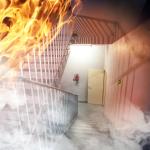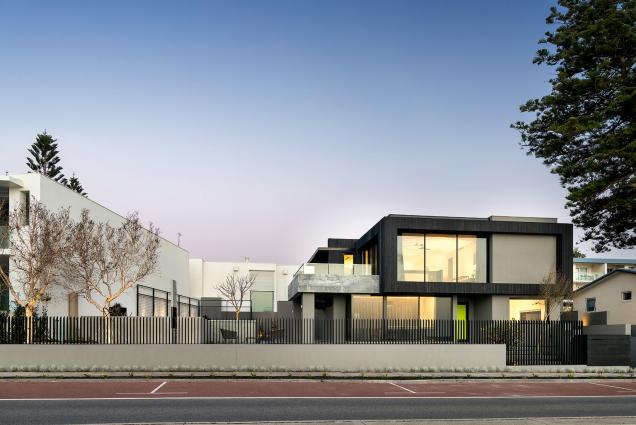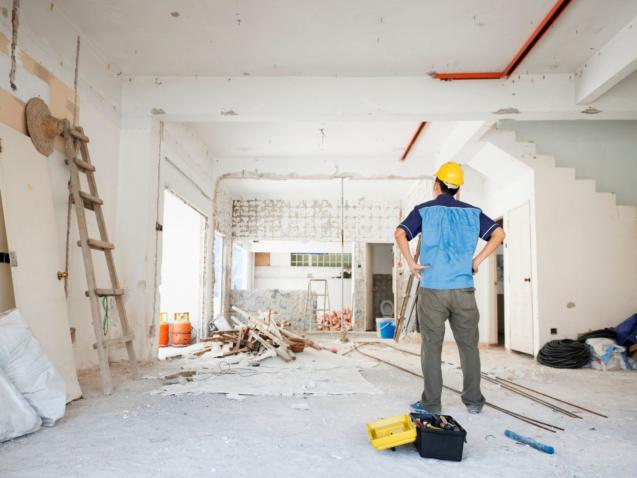
Comprehensive Guide to Fire Rated Doors in Australia
Automatic doors are an essential part of any commercial property, particularly in regard to safety and security. Fire-rated doors play a critical role in reducing the dangers from smoke or fire, ensuring the necessary evacuation of personnel and protecting the premises.
This comprehensive guide will take you through all aspects of fire-rated doors in Australia, helping you to make an informed decision on which type is best for your business.
What is a fire-rated door?
A fire-rated door is a type of door designed to slow down or prevent the spread of fire and smoke from one area of a building to another, unlike a normal door. Fire doors are made with fire-resistant materials, such as metal or composite materials, and are designed to meet certain fire safety standards.
Fire doors are usually labelled with a rating showing the amount of time they can withstand the fire. The rating is determined by testing the door and frame assembly in a lab under specific fire and heat conditions.
In addition to their fire resistance, fire doors may also include other features, such as automatic door options, self-closing mechanisms, smoke seals for the door frames, and strips that expand on the door frame when exposed to heat to provide extra protection against fire and smoke.
Fire doors are often required by building codes in areas of a building that are deemed to be at high risk of fire, such as stairwells, mechanical rooms, and corridors.
Types of fire-rated doors
There are several types of fire-rated doors available, each made from different materials and designed to meet different requirements. Below are some of the most common types of fire-rated doors.
Metal fire doors
Metal fire doors are an essential element in controlling the spread of fire and smoke. In particular, steel fire doors are known as the best-performing type of commercial door for fire protection.
While steel fire doors can offer higher ratings than wooden or glass doors, it is important to consider your specific needs when selecting the best door for your building.
Solid wood doors
These fire doors are made of solid wood and are often used in residential buildings. They can be customised with different finishes and styles.
Glass doors
These doors are made of fire-resistant glass and can be designed to meet different fire ratings. They are often used in commercial buildings, such as offices and shopping centres, where fire exits are a legal requirement, whilst still providing a pleasing aesthetic.
Composite doors
These doors are made of a combination of materials, such as wood, steel, and gypsum, and are designed to provide a high level of fire protection. They are often used in high-risk areas, such as chemical storage rooms and data centres.
Fire curtains
These are flexible curtains made of fire-resistant materials that can be used to create fire barriers in buildings. They are often used in open-plan spaces, such as atriums, to prevent the spread of fire and smoke.
It's important to consult with a professional fire door installer or fire safety expert to determine the best type of fire-rated door for your specific needs and building code requirements.
Fire protection door installation and maintenance
Proper installation and maintenance of fire-rated doors that are manufactured to Australian Standards are essential. Below are some key considerations.
Installation:
Local building codes
If you're planning to install new fire doors or renovate your existing ones, it's essential to check your local building codes.
The local building codes may vary based on the type of building you have. For example, residential buildings may have different requirements compared to commercial buildings.
The placement of fire-rated doors is also essential. The codes may specify where fire-rated doors should be installed, such as between the garage and living space, or between different parts of the building.
Once you have determined the requirements for fire-rated doors, you will need to get the right approvals from your local building department before installing or renovating your doors.
When do you need fire exit doors?
Fire-rated doors should be installed in any building where there is a potential risk of fire. This includes commercial buildings, public buildings, and residential buildings.
Here are some scenarios where a fire door should be installed:
Fire doors and automatic access solutions for your business
Go Doors is a leading supplier of automatic door solutions, including fire-resistant doors, hinged fire doors, automatic sliding doors, revolving doors and disabled access options.
With our expert installation and repair services, you can trust that your fire doors will be installed correctly and stay in top condition for years to come.
Visit our website or contact us today to learn more about our products and services. Trust Go Doors for all your door needs.
This comprehensive guide will take you through all aspects of fire-rated doors in Australia, helping you to make an informed decision on which type is best for your business.
What is a fire-rated door?
A fire-rated door is a type of door designed to slow down or prevent the spread of fire and smoke from one area of a building to another, unlike a normal door. Fire doors are made with fire-resistant materials, such as metal or composite materials, and are designed to meet certain fire safety standards.
Fire doors are usually labelled with a rating showing the amount of time they can withstand the fire. The rating is determined by testing the door and frame assembly in a lab under specific fire and heat conditions.
In addition to their fire resistance, fire doors may also include other features, such as automatic door options, self-closing mechanisms, smoke seals for the door frames, and strips that expand on the door frame when exposed to heat to provide extra protection against fire and smoke.
Fire doors are often required by building codes in areas of a building that are deemed to be at high risk of fire, such as stairwells, mechanical rooms, and corridors.
Types of fire-rated doors
There are several types of fire-rated doors available, each made from different materials and designed to meet different requirements. Below are some of the most common types of fire-rated doors.
Metal fire doors
Metal fire doors are an essential element in controlling the spread of fire and smoke. In particular, steel fire doors are known as the best-performing type of commercial door for fire protection.
- Hollow core doors are made of steel and are filled with fire-resistant materials, such as mineral wool or ceramic fibre. They are durable, reliable, and can be customised to fit any opening size.
- Solid core doors are capable of providing up to three hours of protection and typically have higher ratings than wood or glass doors.
While steel fire doors can offer higher ratings than wooden or glass doors, it is important to consider your specific needs when selecting the best door for your building.
Solid wood doors
These fire doors are made of solid wood and are often used in residential buildings. They can be customised with different finishes and styles.
Glass doors
These doors are made of fire-resistant glass and can be designed to meet different fire ratings. They are often used in commercial buildings, such as offices and shopping centres, where fire exits are a legal requirement, whilst still providing a pleasing aesthetic.
Composite doors
These doors are made of a combination of materials, such as wood, steel, and gypsum, and are designed to provide a high level of fire protection. They are often used in high-risk areas, such as chemical storage rooms and data centres.
Fire curtains
These are flexible curtains made of fire-resistant materials that can be used to create fire barriers in buildings. They are often used in open-plan spaces, such as atriums, to prevent the spread of fire and smoke.
It's important to consult with a professional fire door installer or fire safety expert to determine the best type of fire-rated door for your specific needs and building code requirements.
Fire protection door installation and maintenance
Proper installation and maintenance of fire-rated doors that are manufactured to Australian Standards are essential. Below are some key considerations.
Installation:
- Hire an access solutions professional who understands the specific requirements for installation, including the type of building, hardware and accessories.
- Ensure proper clearance around the frame to prevent binding and ensure proper operation.
- Use appropriate hardware that has been tested and certified in accordance with Australian Standards. For hinged fire doors, approved hardware may include a self-closing mechanism, as well as hinges, locks, and latches.
- Seal all openings between the door and the surrounding walls, floor, and ceiling.
- Fire doors should be regularly inspected to ensure that they are in good condition and working properly.
- Repair or replace a damaged fire door, as soon as possible.
- Ensure fire doors meet inspection, building regulations and disabled compliance.
- Fire-rated doors should be kept clear of any obstructions that could prevent them from closing properly or prevent a safe escape route.
- Keep door hardware in good condition
Local building codes
If you're planning to install new fire doors or renovate your existing ones, it's essential to check your local building codes.
The local building codes may vary based on the type of building you have. For example, residential buildings may have different requirements compared to commercial buildings.
The placement of fire-rated doors is also essential. The codes may specify where fire-rated doors should be installed, such as between the garage and living space, or between different parts of the building.
Once you have determined the requirements for fire-rated doors, you will need to get the right approvals from your local building department before installing or renovating your doors.
When do you need fire exit doors?
Fire-rated doors should be installed in any building where there is a potential risk of fire. This includes commercial buildings, public buildings, and residential buildings.
Here are some scenarios where a fire door should be installed:
- Between the garage and living space
- In stairways and corridors
- Mechanical rooms in buildings often contain heating and cooling equipment, electrical panels, and other flammable materials
- Fire doors should be installed between individual tenant spaces in buildings with multiple occupants to prevent the spread of fire between units
- Buildings with high occupancy, such as schools, hospitals, and theatres, should have fire doors installed to protect the occupants and prevent the spread of fire
Fire doors and automatic access solutions for your business
Go Doors is a leading supplier of automatic door solutions, including fire-resistant doors, hinged fire doors, automatic sliding doors, revolving doors and disabled access options.
With our expert installation and repair services, you can trust that your fire doors will be installed correctly and stay in top condition for years to come.
Visit our website or contact us today to learn more about our products and services. Trust Go Doors for all your door needs.



